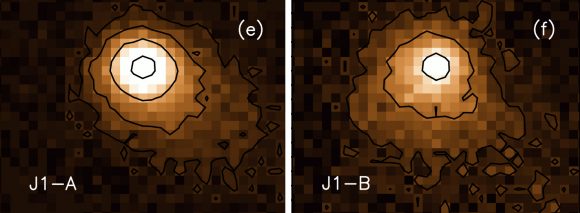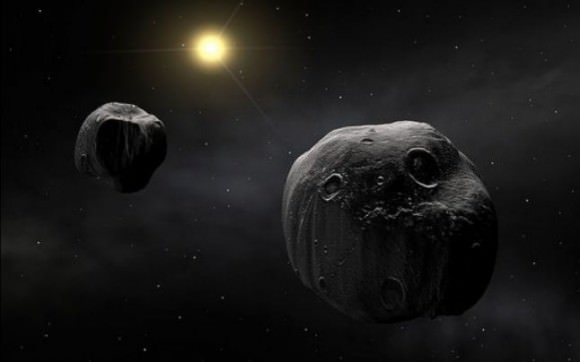In the 18th and 19th centuries, astronomers made some profound discoveries about asteroids and comets within our Solar System. From discerning the true nature of their orbits to detecting countless small objects in the Main Asteroid Belt, these discoveries would inform much of our modern understanding of these bodies.
A general rule about comets and asteroids is that whereas the former develop comas or tails as they undergo temperature changes, the latter do not. However, a recent discovery by an international group of researchers has presented another exception to this rule. After viewing a parent asteroid in the Main Belt that split into a pair, they noted that both fragments formed tails of their own.
The reason asteroids do not do behave like comets has a lot to do with where they are situated. Located predominantly in the Main Belt, these bodies have relatively circular orbits around the Sun and do not experience much in the way of temperature changes. As a result, they do not form tails (or halos), which are created when volatile compounds (i.e. nitrogen, hydrogen, carbon dioxide, methane, etc.) sublimate and form clouds of gas.

Images of the P/2016 J1 asteroid pair taken on May 15th, 2016. They show a central region, the asteroid, and a diffuse blot corresponding to the dust tail. Credit: IAA
As astronomical phenomena go, asteroid pairs are quite common. They are created when an asteroid breaks in two, which can be the result of excess rotational speed, impact with another body, or because of the destabilization of binary systems (i.e. asteroid that orbit each other). Once this happens, these two bodies will orbit the Sun rather than being gravitational bound to each other, and progressively drift farther apart.
However, when monitoring the asteroid P/2016 J1, an international team from the Institute of Astrophysics in Andalusia (IAA-CSIC) noticed something interesting. Apparently, both fragments in the pair had become "activated" - that is to say, they had formed tails. As Fernando Moreno, a researcher at IAA-CSIC who led the project, said in an Institute press release:
"Both fragments are activated, i.e., they display dust structures similar to comets. This is the first time we observe an asteroid pair with simultaneous activity... In all likelihood, the dust emission is due to the sublimation of ice that was left exposed after the fragmentation."
While this is not the first instance where asteroids proved to be an exception to the rule and began forming clouds of sublimated gas around them, this is the first time it was observed happening with an asteroid pair. And it seems that the formation of this tail was in response to the breakup, which is believed to have happened six years ago, during the previous orbit of the asteroid.

An artist's conception of two tidally locked objects orbiting the Sun from afar (2010 WG9). Credit: zmescience
In 2016, the research team used the Great Telescope of the Canary Islands (GTC) on the island of La Palma and the Canada-France-Hawaii Telescope (CFHT) at Mauna Kea to confirm that the asteroid had formed a pair. Further analysis revealed that the asteroids were activated between the end of 2015 and the beginning of 2016, when they reached the closest point in their orbit with the Sun (perihelion).
This analysis also revealed that the fragmentation of the asteroid and the bout of activity were unrelated. In other words, the sublimation has happened since the breakup and was not the cause of it. Because of this, these objects are quite unique as far as Solar System bodies go.
Not only are they two more exceptions to the rule governing comets and asteroids (there are only about twenty known cases of asteroids forming tales), the timing of their breakup also means that they are the youngest asteroid pair in the Solar System to date. Not bad for a bunch of rocks!
Further Reading: IAA
No comments:
Post a Comment